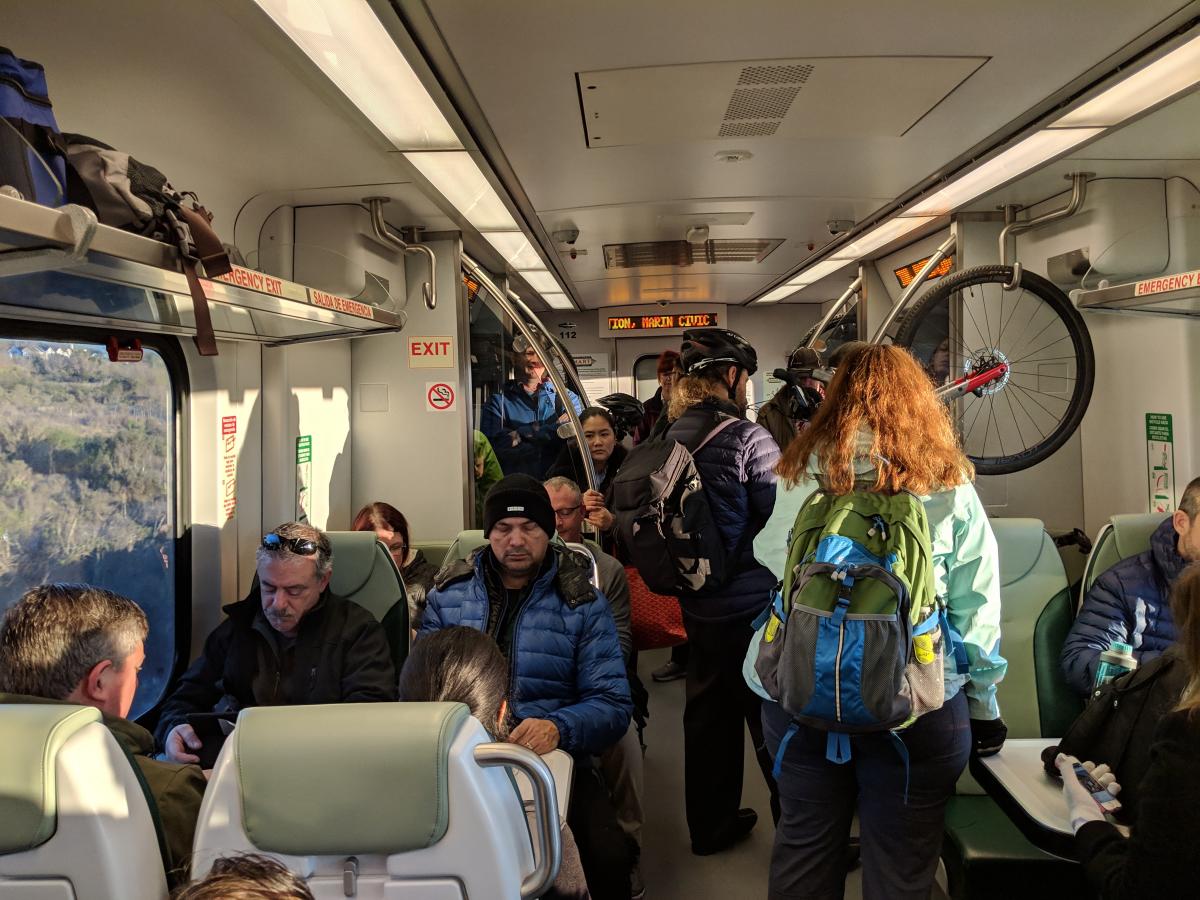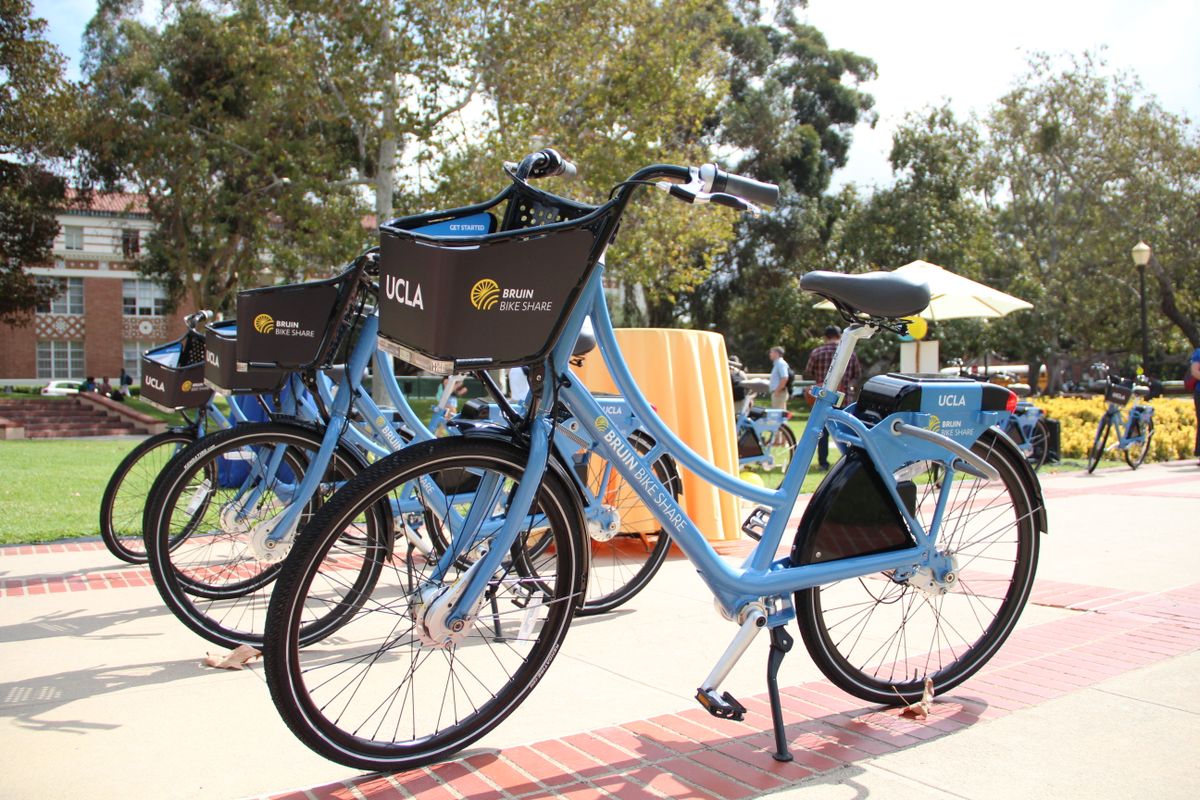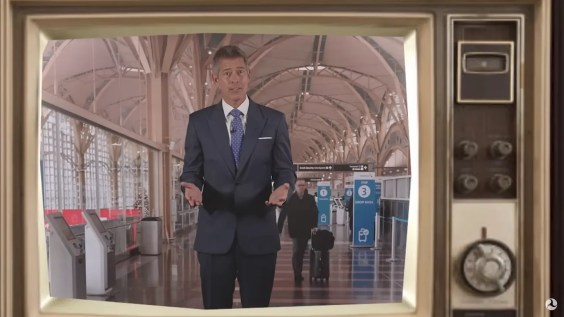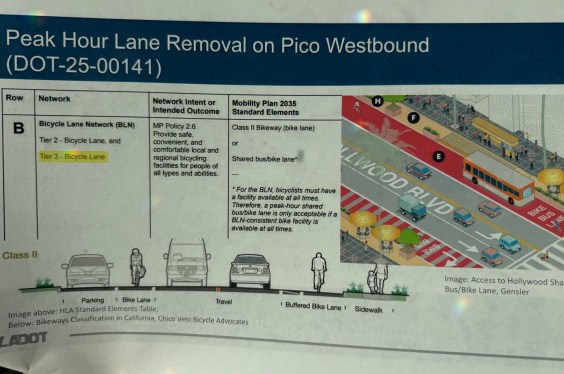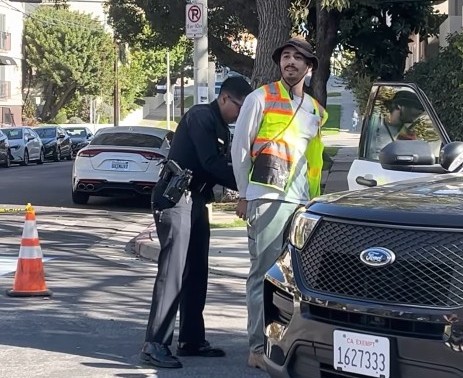Last year, our board member Abby Arnold took the Week Without Driving Challenge and brought along some friends. She's back this year for round 2. You can read last year's entries, and her other work for us, on her author page.
I live in Santa Rosa, the county seat of Sonoma County, which is 55 miles north of San Francisco and is a reasonably affordable place to live.
In observance of A Week Without Driving (Sept. 28-Oct.4) I decided to experience the most controversial proposals in the Marin-Sonoma Coordinated Transit Service Plan, aka MASCOTS, (summary below): the elimination of the Route 101 bus, operated by Golden Gate Transit.
This bus runs all the way to San Francisco seven days a week, with very early morning and late night service on all seven days. It’s the way that people who don’t drive get to and from work and other activities in the corridor from San Francisco to Santa Rosa.
The draft MASCOTS plan proposes to extend the hours of our beloved SMART train which now leaves its northernmost stop (Windsor) at 4:35 a.m. and makes its last trip north from Larkspur at 8:50 pm, where it is somewhat aligned with the ferry to San Francisco. I wanted to find out how it would feel to combine bus and rail if the 101 bus is eliminated.
Midday on Monday I caught the 101 at the Santa Rosa Transit Mall, which has been nicely remodeled and reopened during the past year with good signage and covered bus benches. I helped several other people find the right place to wait for our bus, and it was right on time with a friendly driver who helped each of us pay for our ticket using a Clipper card, cash, or a bus transfer.
The bus took the freeway, where new hours for the HOV lane are causing a lot of anger among drivers. We made a few stops in Rohnert Park (home of Sonoma State University) where we picked up students, foreign tourists, and workers heading mostly to San Francisco. We made another stop in Cotati, and a few stops in Petaluma, where some of my companions exited to get to evening jobs in restaurants and other workplaces, and in Novato.
I decided to check out the transfer situation at the San Rafael Transit Center, known as the best place to transfer from the SMART train to a bus going either north or south. The transit center is well-organized, well-marked, and easy to find your bus going into San Francisco, or the train going north. It’s also a short walk to shopping in San Rafael, which may be places of employment for some of the bus commuters.
I had a wait of more than an hour to catch the next SMART train back to Santa Rosa, so I walked around the transit center area. It felt safe during the day, but I’m not sure how it would feel after dark. Lighting and security staffing will help create a safe environment for bus-to-train riders.
The SMART train is an example of putting rider experience ahead of other considerations. There is a friendly and knowledgeable conductor on every train who checks with each rider to ensure they have paid, but seniors, youth, and students all ride free. Lots of people bring their bikes onto the train, where there are hooks to hang bikes. There are places to charge your phone or computer, restrooms, tables, and comfortable seats. Even when they are somewhat crowded (festival weekends) riding the train is more pleasant than driving.
Santa Rosa has not solved its connectivity issue between the SMART station and the Transit Mall, and I will continue to harp about this until they put in a shuttle. The path between the two points is about a half mile, but you have to walk under a freeway on a very busy street, or through the indoor mall. The walk is not safe or easy for people who use mobility devices. People who use intermodal transit have a barrier in Santa Rosa that will be a factor if the 101 bus is eliminated as proposed by MASCOTS.
The North Bay Area faces a choice as MASCOTS is refined and eventually adopted. Golden Gate Transit says that typical late-night ridership is about three people per bus, and those people will need to make big changes in their daily schedules if their buses are eliminated. The proposed plan abandons the person who needs to be at work in San Francisco at 7 a.m., or who leaves work in San Francisco after 10 p.m.
For those who ride during more typical hours, the longer schedule for the SMART train will meet many needs, especially for those of us who want to go to Petaluma or Novato to hear music and go to bars in the evenings or take the train and ferry to a baseball game. The nine transit agencies, with leadership from elected officials, will need to make the call.
The MASCOTS Plan:
A collaboration among nine North Bay Area transit agencies is working on a plan that they expect will improve transit services, grow ridership, and increase revenue. The plan, called MASCOTS (Marin-Sonoma Coordinated Transit Service Plan) has been released by the working group for comment. The nine agencies include
- Golden Gate Bridge, Highway and Transportation District
- Marin Transit
- Metropolitan Transportation Commission
- Petaluma Transit
- Santa Rosa CityBus
- Sonoma County Transit
- Sonoma County Transportation Authority
- Sonoma-Marin Area Rail Transit
- Transportation Authority of Marin
